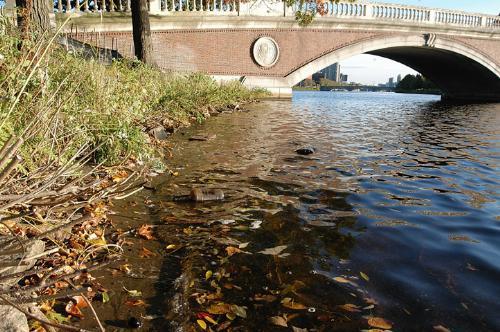
The Charles River, which has had a history of pollution problems, faces a battle over a permit to allow the Mirant Kendall Station to continue cleaning its turbines in the river.
Environmentalists worry that a permit under development by the Environmental Protection Agency (EPA) may delay the agency’s goal for a swimmable and fishable Charles River by 2005.
The draft permit for the Mirant Kendall Station, located in Cambridge downstream from the Longfellow Bridge, would allow the plant to continue using the Charles to clean its turbines.
Under both the expired and draft permits, the natural gas plant can use water from the nearby Broad Canal to cool its turbines and eject millions of gallons of water into the river at 105 degrees in a process known as once-through cooling.
The new draft will allow Mirant to eject up to 70 million gallons of water a day.
The EPA estimates Mirant currently ejects 4.7 million gallons, on average, into the river daily.
Representatives from Mirant, which filed for bankruptcy in July, could not be reached for comment yesterday.
Some environmental groups are using the permit renegotiation process to criticize what they see as existing environmental abuse by the power plant.
Julia Bovey, a spokeswoman for the Conservation Law Foundation, said she was concerned that under the new permit, the plant might send “excess amounts of super-hot water” into the Charles. Historically, the plant has not taken full advantage of the capacity set forth by the permit, Bovey said.
The Conservation Law Foundation, New England environmental group, submitted a 28-page criticism of the draft permit to the EPA.
Bovey said that the draft permit “is not different from the old permit,” but its effects could be more harmful if the plant chooses to utilize its full capacity.
“The improvement in the Charles River over the last 20 years have been vast,” said Bovey. “To take a step backwards would be a shame.”
According to Bovey, the new proposal could turn half of the river from the Longfellow Bridge to the Museum of Science into a “dead zone” for indigenous fish, including the alewife and yellow perch.
The hot water could also worsen existing algae blooms as far upriver as the Mass Ave. bridge, according to EPA state manager David Webster.
But Webster claimed that industrial operations, such as the Mirant Kendall Station, only account for a fraction of the Charles’s pollution.
“There are two standards for swimmability,” he said. “One is bacteria content, which the Mirant Kendall Station doesn’t affect much.”
Read more in News
Mahan Unveils New Harvard-Yale Game Plan












